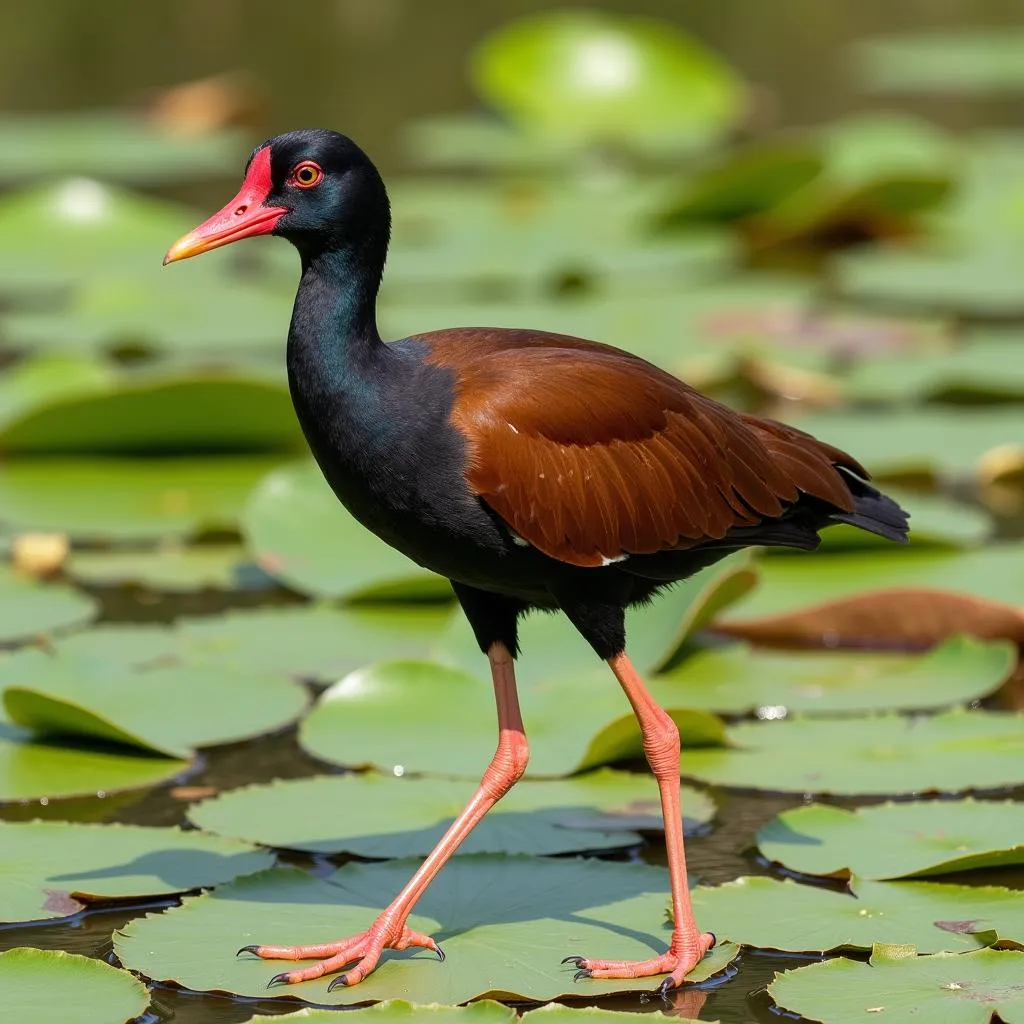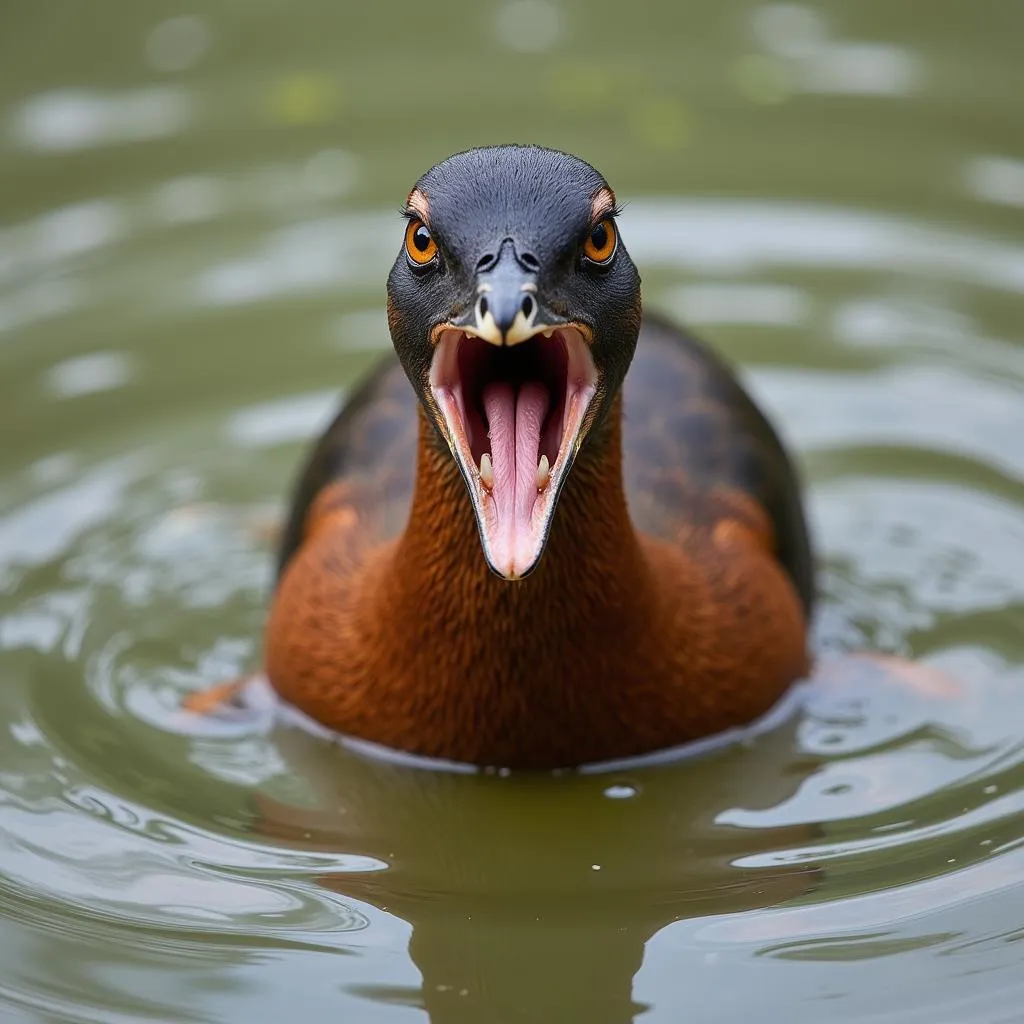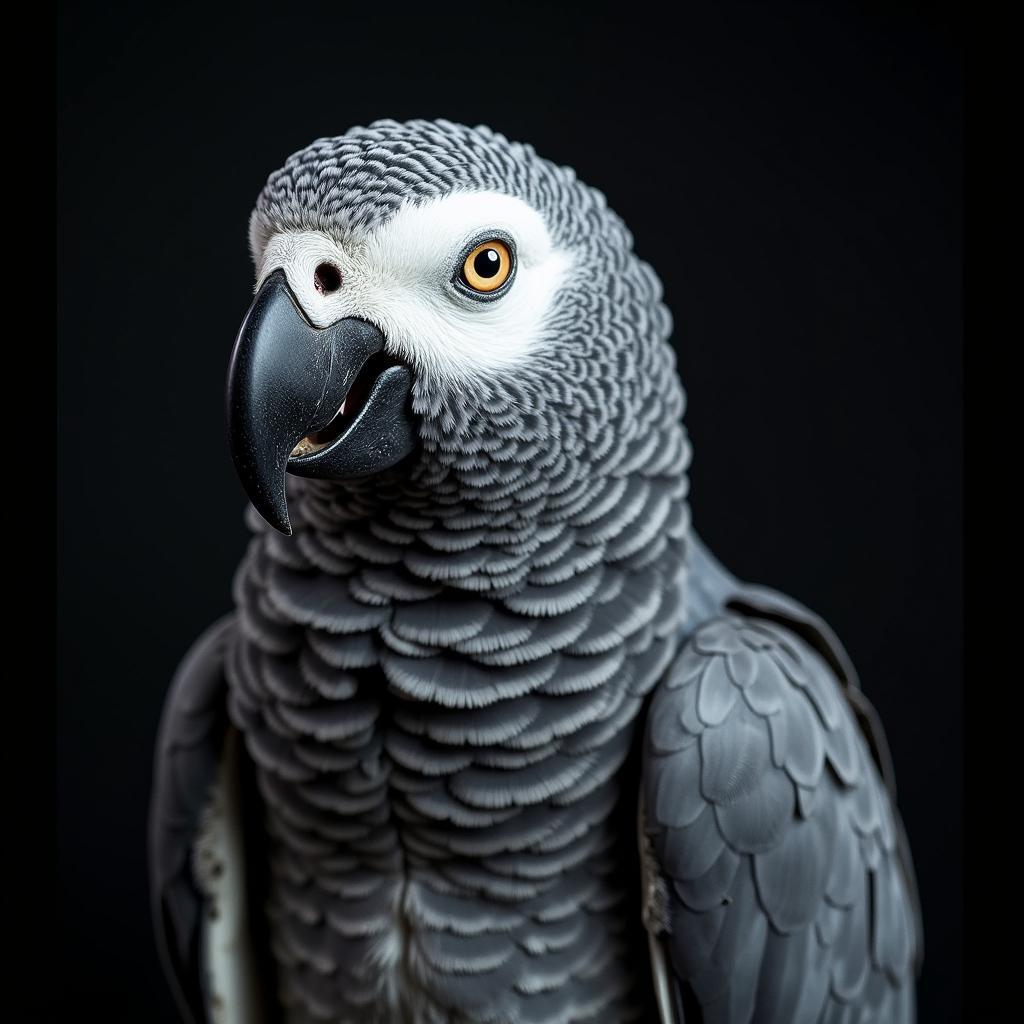The African Jacana: A Water-Walking Wonder of Sub-Saharan Africa
The African Jacana, a bird often referred to as the “Jesus bird” for its apparent ability to walk on water, is a fascinating inhabitant of sub-Saharan Africa. Known scientifically as Actophilornis africanus, this unique species captivates birdwatchers and nature enthusiasts alike with its striking appearance and intriguing behavior.
Long Toes and Territorial Battles: Unveiling the African Jacana
The most striking feature of the African Jacana is its elongated toes and claws. These oversized appendages, disproportionately large for its body size, distribute the bird’s weight over a larger surface area, allowing it to effortlessly walk, run, and even forage on floating vegetation. This “water-walking” ability gives the African Jacana a distinct advantage in its preferred habitat: shallow lakes, swamps, and lagoons teeming with insects, small fish, and aquatic invertebrates.
 African jacana walking on lily pads
African jacana walking on lily pads
Beyond its distinctive feet, the African Jacana is sexually dimorphic, meaning males and females exhibit different physical characteristics. Females are larger and more brightly colored than their male counterparts, sporting a chestnut back and neck, contrasting sharply with their white face and black crown. Males, smaller in size, display a subtler beauty with their predominantly brown plumage.
This size difference plays a crucial role in the Jacana’s unusual breeding system, known as polyandry. In this system, a single female mates with multiple males, each of which maintains a small territory within her larger territory. The female defends her territory aggressively from rivals, while the males are responsible for nest building, incubation, and chick-rearing.
 African Jacana female in a territorial dispute
African Jacana female in a territorial dispute
A Closer Look at the African Jacana’s Lifestyle
The African Jacana is a highly vocal species, communicating through a range of calls, whistles, and guttural sounds. These calls serve various purposes, from attracting mates to announcing territorial boundaries and warning off intruders. Their diet primarily consists of insects and other invertebrates picked from the water’s surface or from floating vegetation. They may also consume small fish, snails, and seeds.
Adaptability and Conservation: The African Jacana’s Future
African Jacanas are not considered globally threatened and boast a relatively stable population. However, they face increasing pressure from habitat loss due to human activities such as wetland drainage for agriculture and urbanization. Pollution from agricultural runoff and industrial waste also poses a significant threat to their freshwater ecosystems.
Despite these challenges, the African Jacana demonstrates remarkable adaptability, readily colonizing new habitats, including artificial wetlands such as sewage ponds and rice fields. Conservation efforts focusing on preserving and restoring wetland habitats are crucial to ensuring the long-term survival of this extraordinary bird.
Conclusion: Celebrating the African Jacana’s Unique Place in Nature
The African Jacana, with its water-walking prowess, striking appearance, and unusual breeding system, stands out as a remarkable example of avian adaptation and evolution. Its presence graces the wetlands of sub-Saharan Africa, reminding us of the intricate beauty and biodiversity found within these vital ecosystems. As we admire this fascinating bird, let us also recognize the importance of conservation efforts to protect the African Jacana and its watery home for generations to come.

